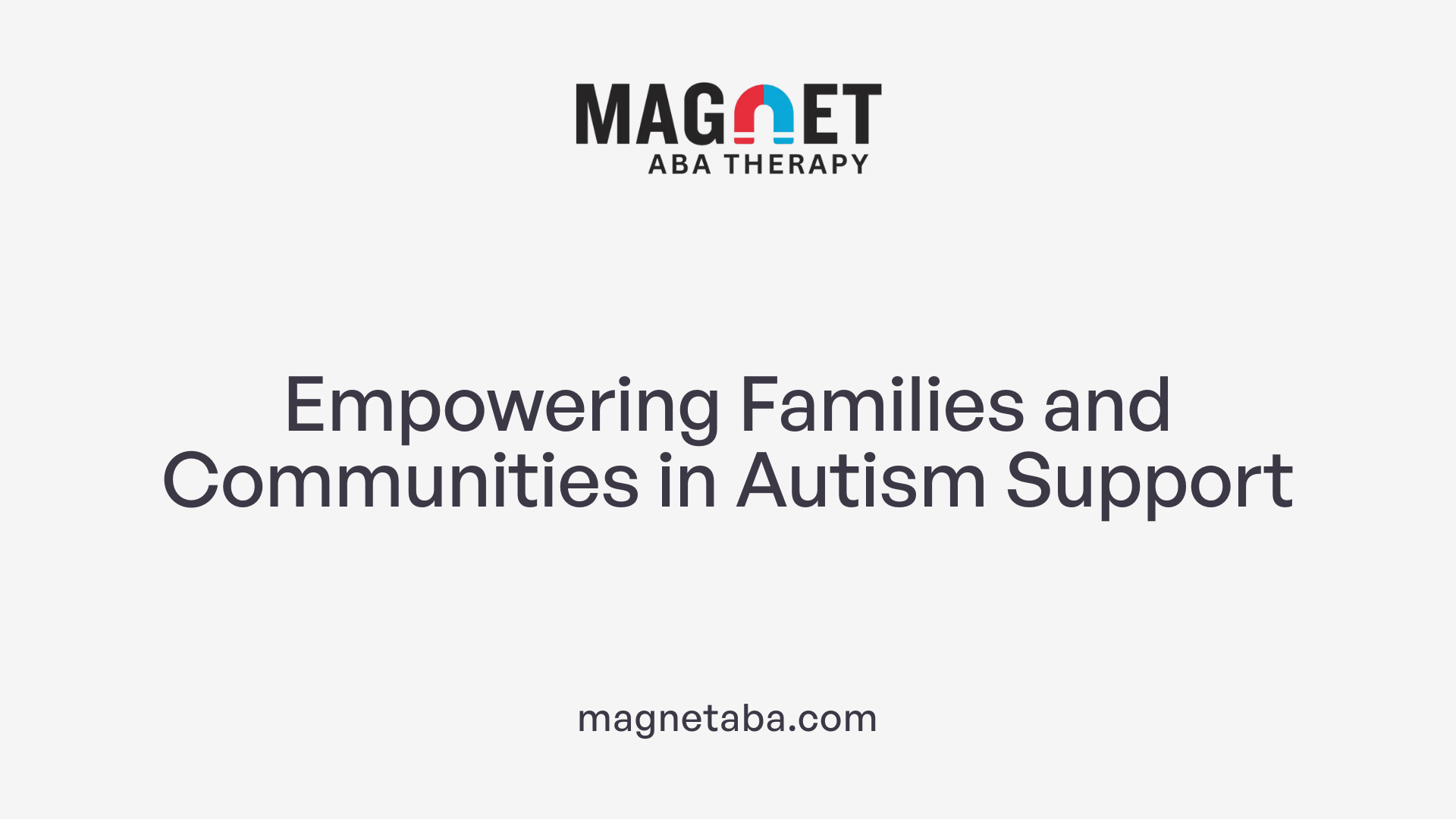Understanding the Impact of ABA on Cognitive Flexibility in Autism
Applied Behavior Analysis (ABA) therapy stands as a cornerstone in autism intervention, offering scientifically validated strategies that improve a broad range of skills crucial for daily functioning. Among these, cognitive flexibility—a person's ability to adapt and switch between tasks or thoughts—is often a significant challenge for individuals with autism. This article explores how ABA therapy supports cognitive flexibility through personalized, evidence-based approaches, highlighting the science, practitioners, techniques, and outcomes that make ABA a transformative tool for fostering adaptive behavior.
What Is Applied Behavior Analysis (ABA) Therapy?
What is Applied Behavior Analysis (ABA) therapy?
Applied Behavior Analysis (ABA) therapy is a scientifically supported technique designed to improve specific skills and reduce challenging behaviors, especially in individuals with autism spectrum disorder. Rooted in the principles of learning and behavior, ABA uses methods such as positive reinforcement and structured teaching to help individuals develop essential skills.
ABA targets areas like communication, social interaction, and adaptive behaviors to enhance overall functioning. It employs a variety of strategies including naturalistic, child-centered approaches such as Pivotal Response Treatment and the Early Start Denver Model. These strategies make learning engaging and relevant to real-world settings.
Personalization is central to ABA therapy. Each program is tailored to the unique strengths, needs, and interests of the individual, ensuring meaningful progress. Moreover, the delivery and design of ABA interventions are overseen by certified professionals holding credentials like the Board Certified Behavior Analyst (BCBA). These practitioners have advanced degrees, supervised fieldwork experience, and have passed rigorous exams to guarantee quality care.
Extensive empirical research validates ABA's effectiveness in improving vital skills and reducing behaviors that impede learning. Major organizations endorse ABA as a best practice for autism therapy, reflecting its strong scientific foundation and positive impact.
| Aspect | Details | Importance |
|---|---|---|
| Scientific Basis | Uses empirically supported learning and behavior principles | Ensures systematic, reliable interventions |
| Target Population | Primarily individuals with autism spectrum disorder | Addresses pervasive lifelong challenges |
| Core Techniques | Positive reinforcement, naturalistic approaches, structured teaching | Promotes meaningful skill acquisition and behavior change |
| Personalization | Individualized plans based on personal needs and interests | Maximizes engagement and effectiveness |
| Certification | Delivered by certified BCBAs who meet educational and practical standards | Maintains high quality and ethical standards |
Who Provides ABA Therapy? Qualifications and Roles of Practitioners

What Are the Requirements for BCBA Certification?
ABA therapy is mainly provided by Board Certified Behavior Analysts (BCBAs), who undergo rigorous training. To qualify, candidates must earn at least a master's degree, complete specialized coursework in behavior analysis, ethics, measurement, assessment, and intervention, and fulfill 1,500 to 2,000 hours of supervised practical experience. This supervision is typically conducted by a qualified professional during a practicum or fieldwork.
After completing these steps, BCBA candidates must pass a comprehensive certification exam administered by Pearson VUE, with testing centers including locations like Concord, New Hampshire. This certification process ensures that practitioners possess the knowledge and skills needed for effective ABA therapy.
Who Else Is Involved in Delivering ABA Therapy?
In addition to BCBAs, licensed therapists and community-based providers play important roles. These professionals often work in clinics, schools, or community organizations focused on autism spectrum disorder (ASD). They provide direct interventions, support skills development, and help implement therapy programs tailored to individual needs.
How Does Supervision and Collaboration Enhance Therapy Outcomes?
BCBAs not only provide therapy but also supervise other therapists and paraprofessionals involved in treatment delivery. This oversight guarantees that interventions remain consistent and effective. Collaboration among behavior analysts, therapists, medical professionals, and families is critical for designing personalized treatment plans and monitoring progress.
What Training Is Provided to Caregivers and Educators?
A vital aspect of ABA therapy includes training caregivers, family members, and educators to use behavior-analytic techniques throughout day-to-day routines. This training fosters generalization of skills across environments, maximizing the therapy’s impact on communication, social interactions, and adaptive behaviors.
Together, this multidisciplinary approach ensures that ABA therapy is delivered proficiently and supports the diverse needs of individuals with autism.
Duration and Intensity of ABA Therapy for Lasting Impact

How long does ABA therapy usually last?
Applied Behavior Analysis (ABA) therapy for autism spectrum disorder typically lasts between 3 to 5 years, tailored to each individual's unique needs and progress. Therapy often starts early in childhood and involves an initial comprehensive assessment to develop a personalized treatment plan. This plan commonly includes 20 to 40 hours of intensive therapy per week, particularly for younger children.
Importance of long-term and intensive intervention
The long-term and intensive nature of ABA is crucial because autism is a pervasive condition that affects the individual throughout life. Intensive interventions, especially approaching 35 hours per week or more, have been linked to significantly better outcomes, including increased IQ scores, improved social skills, and enhanced adaptive behaviors. These improvements contribute to better cognitive flexibility, reducing rigidity and repetitive behaviors, which are core challenges in autism.
Correlation between intensity and outcomes in cognitive flexibility
Studies show a strong correlation between therapy intensity and the success of gaining crucial skills such as communication, social interaction, and adaptive behaviors. Intensive ABA enhances cognitive flexibility by incorporating task-switching exercises, problem-solving activities, and role-playing strategies, helping individuals adapt to changing environments and new situations.
Individualized treatment plans evolving over time
ABA therapy evolves over the course of treatment, with ongoing assessments guiding modifications to the intensity and focus of interventions. Treatment plans become more individualized, compassionate, and child-centered, moving beyond rigid routines to include games, rewards, and naturalistic settings like homes, schools, and community environments. This evolution ensures that therapy meets current developmental needs and maximizes real-world functioning.
| Aspect | Description | Notes |
|---|---|---|
| Typical Duration | 3 to 5 years | Dependent on individual progress |
| Weekly Therapy Hours | 20 to 40 hours | Higher intensity linked to better outcomes |
| Outcome Focus | Cognitive flexibility, adaptive skills | Includes communication and social interactions |
| Treatment Evolution | From routine-based to naturalistic approaches | Personalized and compassionate |
ABA Therapy Techniques That Enhance Cognitive Flexibility

What techniques are commonly used in ABA therapy?
ABA therapy employs a variety of methods to encourage positive behavioral changes and skill development in individuals with autism. Among these, positive reinforcement and behavior chaining are frequently used. Positive reinforcement involves rewarding desirable behaviors to increase their occurrence, while behavior chaining teaches complex skills step-by-step by linking simpler tasks together.
Positive reinforcement and behavior chaining
Positive reinforcement motivates individuals to repeat functional behaviors by providing immediate rewards, such as praise or tokens. Behavior chaining breaks down a multi-step activity into smaller, manageable tasks, which helps the learner complete the overall skill progressively.
Discrete trial training and natural environment teaching
Discrete trial training (DTT) is a structured approach that uses clear instructions and responses in brief, repetitive trials to teach specific skills. Conversely, natural environment teaching (NET) focuses on learning opportunities in everyday environments, making skills more generalizable. Both methods are essential for promoting learning and adaptability.
Task switching exercises and role-playing
To enhance cognitive flexibility, ABA integrates task switching exercises and role-playing activities. Task switching trains individuals to shift attention between different tasks or rules, helping them adapt to changing demands. Role-playing scenarios encourage problem-solving and social skill development by simulating real-life interactions.
Use of visual supports and differential reinforcement
Visual supports such as schedules, cues, and prompts assist learners in understanding expectations and transitions, reducing rigidity. Differential reinforcement selectively rewards alternative, more adaptive behaviors while discouraging rigidity or repetitive actions, fostering greater behavioral flexibility.
These techniques—individually or combined—are tailored to each participant to address unique challenges and maximize gains in functional communication, social skills, and daily living abilities, directly contributing to improved cognitive flexibility.
ABA Therapy’s Focus on Cognitive Flexibility: Strategies and Exercises

How Does ABA Enhance Cognitive Flexibility in Autism?
Applied Behavior Analysis (ABA) therapy emphasizes improving cognitive flexibility, which is crucial for helping individuals with autism adapt to changes and new situations. One way ABA does this is through task-switching exercises that encourage individuals to shift attention between different activities or rules. These exercises support mental flexibility by helping learners practice changing their focus in a controlled, supportive environment.
Which Activities Foster Problem-Solving Skills?
ABA incorporates problem-solving activities tailored to the individual's abilities and preferences. These activities challenge autistic individuals to think critically and explore different solutions. By engaging in problem-solving, they enhance adaptive thinking and become better at handling unexpected scenarios, which is a core aspect of cognitive flexibility.
What Role Does Role-Playing Play in ABA?
Role-playing scenarios allow learners to practice social interactions and decision-making in realistic settings. This method helps individuals safely simulate changes in social environments, preparing them for real-world flexibility. Through role-playing, autistic individuals develop new communication and behavioral strategies vital for navigating everyday life.
How Are Behavioral Flexibility and Rigidity Addressed?
Modern ABA techniques also focus on behavioral flexibility by reducing rigidity and repetitive behaviors. Strategies such as differential reinforcement encourage the adoption of varied behaviors, while response interruption helps to manage repetitive patterns. Visual supports are often integrated to guide transitions and reduce anxiety related to change, further promoting adaptable behavior.
These structured yet compassionate approaches collectively enhance not only functional skills but also the broader ability to adapt and thrive in dynamic environments, making ABA a comprehensive method for fostering cognitive flexibility in autism.
Empirical Evidence Supporting ABA’s Effectiveness on Cognitive Skills
Improvement in IQ Scores and Speech Production
Studies have demonstrated notable improvements in IQ scores and speech production among children receiving Applied Behavior Analysis (ABA) therapy. These gains are significant as they support better communication and learning abilities, which are often areas of challenge for individuals with autism spectrum disorder (ASD).
Adaptive Skills Gains Linked to Flexibility
ABA interventions focus on enhancing adaptive behaviors, such as daily living skills and social interaction, which are crucial for increasing cognitive flexibility. By promoting behavioral flexibility through techniques like differential reinforcement and role-playing, ABA helps reduce rigidity and repetitive behaviors common in autism.
Recent Research Validating ABA Outcomes
Recent empirical studies, including a 2024 investigation involving 60 children in Wuhan, highlight ABA's effectiveness in enhancing social and emotional development. This research adds to the growing body of evidence supporting ABA as a scientifically validated approach to improving various cognitive and functional skills in autistic individuals.
Expert Consensus and Endorsements by Major Organizations
ABA therapy is endorsed by major organizations such as Autism Speaks and the American Psychological Association. Experts emphasize the importance of certified practitioners in delivering quality ABA treatments, ensuring ethical standards, and fostering real-world improvements among children with autism.
Is ABA Therapy Effective for All Individuals with Autism?
ABA therapy is a research-backed method that has effectively enhanced social, communication, and adaptive skills in many children with autism. However, effectiveness varies according to individual differences including each child’s unique needs and the therapy's intensity. Tailoring ABA interventions to promote autonomy and respect neurodiversity is essential to maximize benefits. While ABA is not a universal solution, when carefully implemented by qualified professionals, it offers substantial positive outcomes for many autistic individuals.
Evolution of ABA: Compassionate and Individualized Approaches
Transition from Strict Routines to Engaging Methods
Applied Behavior Analysis (ABA) therapy has undergone a significant evolution over the years. Initially, ABA focused heavily on strict routines and repetitive drills, which often felt mechanical to the individuals involved. Modern ABA shifts away from these rigid structures, instead emphasizing compassionate, engaging methods that prioritize the individual's interests and comfort.
Incorporation of Games and Rewards
To foster learning and skill development more effectively, ABA therapists now incorporate games and reward systems into treatment plans. These positive reinforcements motivate individuals with autism, creating enjoyable and meaningful therapeutic experiences that encourage active participation. Such strategies help to build communication, social interaction, and adaptive skills in a way that feels natural and supportive.
Naturalistic and Child-Centered Interventions
Current ABA practices often adopt naturalistic, child-centered approaches. These methods focus on real-world functioning by tailoring interventions to each child's unique needs and preferences. Instead of controlling every aspect, therapists work within the child's environment—whether at home, school, or community settings—facilitating learning in everyday contexts. This flexibility enhances the generalization of skills and supports cognitive adaptability.
Ethical Considerations and Respect for Client Rights
With this evolution in approach, ethical standards remain paramount. ABA providers ensure safety, respect, and informed consent throughout treatment, prioritizing client rights and dignity. Personalized treatment plans are developed with the individual and their family, respecting autonomy and fostering a collaborative therapeutic relationship. This ethical framework ensures that ABA not only remains effective but also humane and respectful to those it serves.
Insurance and Certification Standards Ensuring Quality ABA Services
What laws guarantee insurance coverage for ABA therapy in New Hampshire?
In New Hampshire, House Bill 569, commonly known as Connor’s Law, mandates insurance coverage for evidence-based autism treatments, including ABA therapy. This law stipulates coverage limits of up to $36,000 annually for children aged 0-12 and up to $27,000 for children aged 13-21.
What are the certification requirements for ABA providers?
ABA providers must be certified by the Behavior Analyst Certification Board (BACB) to offer insurance-covered services. Certification levels include Board Certified Behavior Analyst (BCBA®) and Board Certified Assistant Behavior Analyst (BCaBA®).
How do supervised fieldwork and exams contribute to certification?
To achieve BCBA® certification, candidates need a master’s or doctoral degree with specialized coursework in behavior analysis, ethics, measurement, assessment, and intervention. They must complete between 1,500 to 2,000 supervised fieldwork hours, typically during practicum experiences, and pass a comprehensive exam administered at Pearson VUE testing centers in Concord, NH.
Where can individuals access ABA services in New Hampshire?
ABA therapy providers such as Autism Bridges, Constellation Behavioral Services, and Granite State ABA Services operate across New Hampshire. They offer services in diverse settings including homes, schools, and community environments, ensuring accessibility tailored to family and client needs.
Supporting Families and Communities Through ABA Therapy

Training for caregivers and educators
ABA therapy emphasizes the importance of involving not only the individual receiving treatment but also their families and educators. Training programs focus on equipping caregivers and teachers with strategies to reinforce skills learned during therapy sessions. This collaborative approach ensures consistent support, facilitating the learner's progress across all environments.
Generalization of skills across environments
A significant goal of ABA therapy is to help autistic individuals apply learned skills in various settings such as home, school, and community. Therapists work closely with families to promote the generalization of communication, social, and adaptive behaviors, ensuring that progress is maintained outside structured sessions.
Collaboration among healthcare providers
Effective ABA therapy involves teamwork among a range of professionals including behavior analysts, speech therapists, educators, and medical providers. This integrated care model allows for personalized treatment plans that address the unique needs of each individual and encourage holistic development.
Enhancing overall quality of life for autistic individuals
By improving functional skills and cognitive flexibility, ABA therapy supports autistic individuals in becoming more independent and adaptable. Family involvement and community support are vital components in this process, contributing to stronger social networks and better long-term outcomes. Together, these efforts help create an empowering environment that promotes well-being and a higher quality of life.
The Path Forward: ABA Therapy and Cognitive Flexibility in Autism
ABA therapy remains a critical, evidence-based approach to enhancing cognitive flexibility in individuals with autism. Its structured yet personalized techniques, supported by rigorous certification processes and evolving compassionate methodologies, empower learners to navigate complex social and environmental challenges. Through sustained, intensive intervention and collaboration with families and professionals, ABA fosters adaptability, communication, and independence—elements vital for improving life quality. Though not universally uniform in effect, when tailored and ethically implemented, ABA therapy fosters meaningful growth, unlocking the potential for cognitive flexibility and resilience in the autism community.
References
- Is Applied Behavior Analysis (ABA) an effective treatment ...
- ABA Therapy Techniques for Addressing Rigidity
- How to Become an Applied Behavior Analyst in New Hampshire
- How Long Does ABA Therapy Last?
- How Much ABA is Enough?
- From Minutes to Months: The Timeline of ABA Therapy
- An evaluation of the effects of intensity and duration on ...
- Applied Behavior Analysis (ABA)
- Applied Behavior Analysis (ABA)












